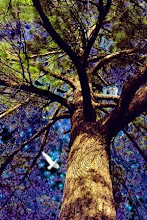Traditional Cherokee dyes
By George Ellison
“Woven goods—baskets and mats—document what women did, when, and how. They illuminate the work of women who transformed the environments that produced materials for basketry. They point to women’s roles in ceremonial, subsistence, and exchange systems. As objects created and utilized by women, baskets and mats conserved and conveyed their concepts, ideas, experience, and expertise. They asserted women’s cultural identity and reflected their values.”
— Weaving New Worlds: Southeastern Cherokee Women and Their Basketry, by Sarah H. Hill (University of North Carolina Press, 1997)
I have for many years been interested in the materials the ancient Cherokees used to make basket splints and dyes. In this era of casino gambling and economic revitalization, I will be equally interested in how modern Cherokee artisans maintain their craft traditions, especially basket making, perhaps the one for which they are most famed. Here are some observations culled from previous Back Then columns regarding this topic.
I’ve seen old photos of Cherokees coming down the Tuckasegee River from the Qualla Boundary (Cherokee) as far as Bryson City in canoes to gather cane. Most people don’t realize it, but up until the early 20th century, sizable canebrakes existed here in the mountains. That wouldn’t be feasible today because there is very little cane to be found, and what can be found is generally of poor quality. Ironically, the Cherokees — masters of cane implementation — are themselves having to venture into other states to locate suitable cane for their baskets, mats, flutes, and other items.
I had always supposed that the Cherokees had been utilizing white oak as a source for basket splints since they evolved as a distinctive culture a thousand or so years ago; however, I recently discovered, in Sarah H. Hill’s book (cited above), that it was the European settlers who introduced the Cherokees to white oak splints. Her research indicated that, “Even though Cherokees and whites lived in close proximity and traded with each other for two centuries before the removal (1838), no evidence indicates that Cherokee weavers fully incorporated white oak into their basketry traditions prior to the nineteenth century.”
The Cherokees were dye-masters. They could manipulate colors to obtain the exact shades they desired by the amount of pulp, the source of the pulp (root, bark, leaf, or husk), and the amount of time the splints were left in the boiling pot of water.
Mordants are reactive agents used to fix or set coloring matter in textiles, leather, basket splints, or whatever. Hill reported that the Cherokee weavers “may use soda, alum, or copper as a mordant. Some remember that their mothers added old iron froes, ax heads, or nails to walnut dye pots.” Several Cherokee basket makers have told me that ashes and urine were also used for this purpose.
Hill mentioned a number of dye sources used by the Cherokees, but in my experience they have traditionally favored the following: bloodroot for orange-red; black walnut for brown; butternut walnut for black; and shrub yellowroot for yellow. Pulped rootstock was always used from yellowroot and bloodroot. So as not to kill the walnut trees, however, they often used bark or hulls instead of rootstock.
Bloodroot is surely one of most widely admired wildflowers in the eastern United States. The first part of its scientific name (Sanguinaria) means “bleeding,” in reference to the peculiar red juice that oozes from the rootstock when broken. (Other members of the Poppy Family also produce this acrid fluid, which contains various akaloids.)
Black walnut is found throughout the lower elevations. But its little cousin, the butternut walnut (sometimes called white walnut), is becoming scarce due to an invasive fungus. Recently, I was pleased to learn at the Web site for the Revitalization of Traditional Cherokee Artisan Resources (www.rtcar.org) that, “The University of Tennessee [has contracted] to plant butternut seedlings to assist Cherokee artisans in the production of dyes for traditional baskets [and that] one thousand seedlings will be established on the Kituhwa property owned by the Eastern Band.” This property, the site of the original Cherokee mother town and locally known as Ferguson Fields, is situated along the north bank of the Tuckaseigee just east of Bryson City.
Shrub yellowroot grows along most streams here in the mountains. The leafy tops of the plant resemble carrot tops. Some years ago I interviewed Martha Ross, a resident of the Big Cove Community on the Qualla Boundary (Cherokee). She and her three sisters — Maggie Lossiah, Jane Taylor, and Dorothy Thompson — all learned basket making from their mother, Charlotte Lossiah.
“Mother didn’t use yellowroot as a dye too much except with honeysuckle,” Ross recalled. “She liked to use bloodroot. But I like yellowroot. We also use butternut and walnut.
“You can gather yellowroot anytime, but it’s best in spring when you get a brighter color. It’s a little dull in winter. The roots can be used if you beat them with a hammer, but I like the stems to get the prettiest yellow.
“You scrape the pulp into a kettle of boiling water on the stove. Pull the splints out to the edge so that the yellow fills up a little hole in the center. After 30 or 40 minutes it’s ready. I never dye a big batch at once, just enough to make a few baskets.”
Hopefully, the current generation of Cherokee artisans will be as interested as Ross was in listening, observing, and maintaining the old ways of doing things.
Sunday, December 09, 2007
Subscribe to:
Posts (Atom)




